Day 1: Jezzine to Aitanit
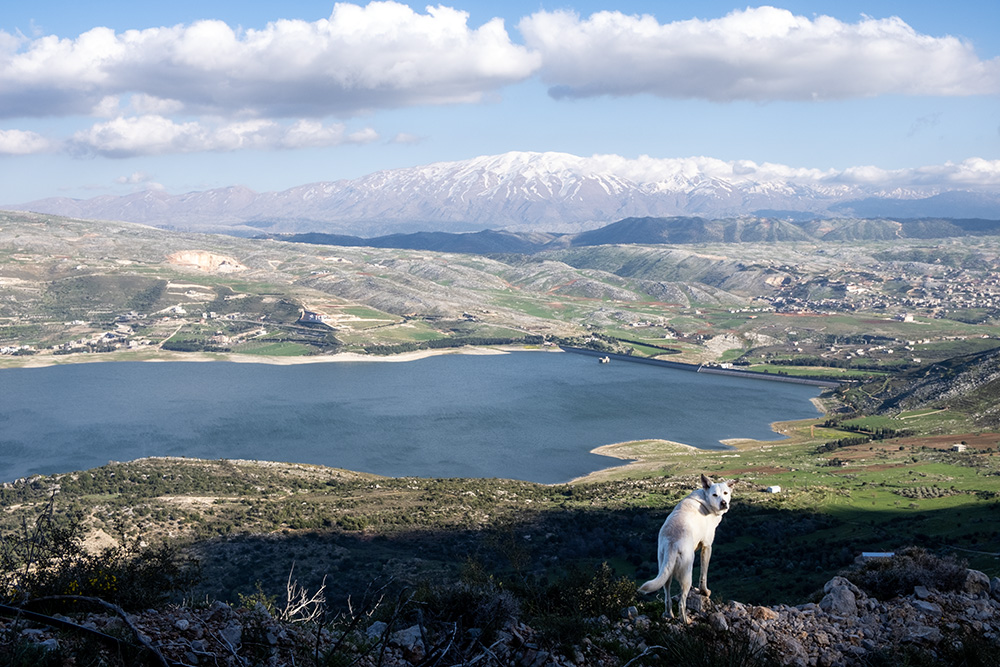
Looking over Lake Qaraoun and Jebel Sheikh (Mount Hermon) in the distance
For the past few years, we have been meaning to hike the southern portion of the Lebanon Mountain Trail (LMT) in spring, but life always got in the way. Finally, this year, for Norbert’s 65th birthday, we decided to put life on pause and make this a priority.
The four-day trek, amounting to approximately 77 km (48 miles) starts in Jezzine in the Chouf Mountains and ends in the southern town of Marjayoun. The trip was led by one of Lebanon’s finest guides, Jorge Abi Saad of Libantrek. After the taxi dropped us off in Jezzine, we started the steep climb up the Chouf mountains to 1900 meters (6235 ft). As we made our way up to the top, we walked through fields of grass and wild flowers along a gurgling stream, and crossed pine groves until we reached a rocky landscape which stood in stark contrast with the greenery below.

The trail from Jezzine to Aitanit took us from green meadows to large patches of snow as we crossed over the Barouk summit before descending to the Beqaa Valley.
Somewhere along the way, a handsome and well-mannered white Labrador joined us on our journey. The dog had a collar but no identification. We were delighted with his company but worried about what would become of the pooch when we reached our destination. When we reached the top of the mountain, where temperatures were considerably cooler, our canine friend delighted in running across the wide patches of snow that still covered those peaks. At lunch break, we shared our modest meal of pizza, cheese, toast and whatever else we had in our pack with our stowaway. During the descent to the Beqaa Valley, we watched as the biblical Jebel Sheikh (Mount Hermon) changed colors while the sun was setting. Even poochy seemed to revel in the scenery.
On arrival in Aitanit we were received by some locals who helped us locate the dog’s owner. Long story which ended successfully. We were finally able to give our companion a name, Yukki! What a relief it was to reunite him with his people.
Day 2: Aitanit to Rashaya
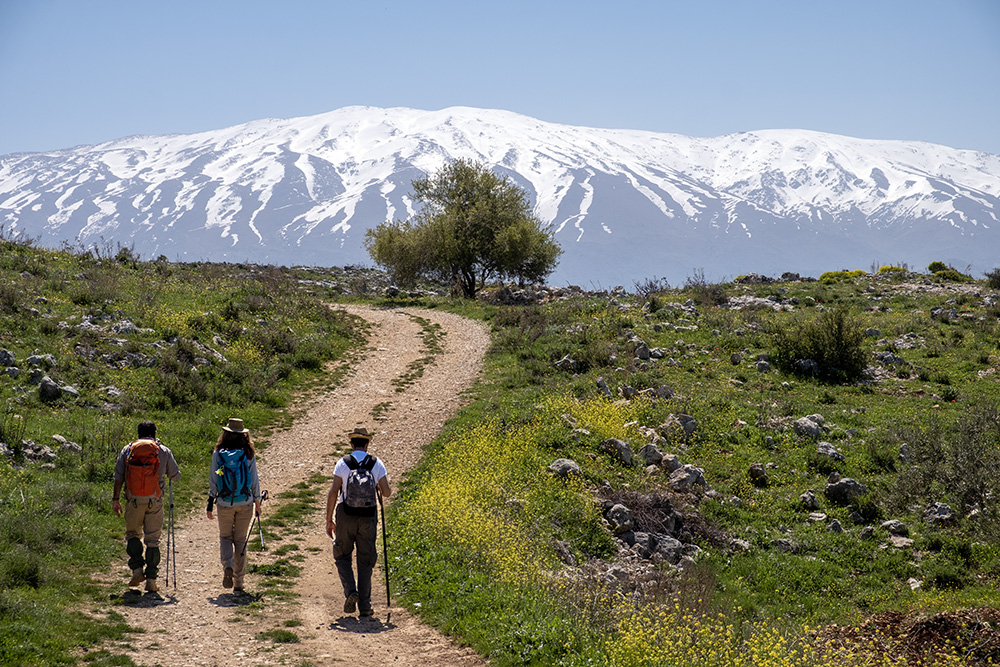
The long walk across the Beqaa Valley towards the town of Rashaya at the base of Mount Hermon.
On the second day of our four-day trek along the final stretch of the Lebanon Mountain Trail (LMT), we walked from the village of Aitanit on the western edge of Lebanon’s Beqaa Valley to Rashaya to the east. The journey took about 7 hours during which we crossed 17 km (11 miles).
The most impressive feature of this stretch was the feeling of being dwarfed by Jabal el Sheikh (Mount Hermon), the highest peak in the Anti-Lebanon mountain chain. This mystical mountain, which sits at the corner of Lebanon, Syria, and Israeli-occupied Palestinian land, has been considered sacred by various cultures and religions since antiquity. According to local belief, the mountain is the site of the transfiguration of Christ, and said to be the first to emerge after Noah’s biblical flood.

Two views of Mount Hermon during the trek to Rashaya
We began by descending to the valley floor where the contrast between the snow-covered mountain and the greenery below was overwhelming. We then crossed over the Litani Dam which was built in the late 1950s to provide water for irrigation and generate electricity for the area. The dam has also resulted in the creation of Lake Qaroun, the largest artificial lake in Lebanon. This year, due to the lack of precipitation and snowpack on the mountains, the dam was lower than normal.
Beside Jorge, we used the services of a local guide, Raja, who helped us navigate the trail which was blanketed in fresh grass and the first of the season’s wildflowers. Among the flowers that adorned our path were the tall yellow mustard, the tiny butter cups appropriately called “bouton d’or” in French due to the specks that shine like gold on their petals, and the red and purple anemones. The clouds from the previous day had cleared and the sun beat down on us as we made our way across the valley.
We reached Rashaya el Wadi in the late afternoon. After a quick stop at our hotel we had just enough time to briefly tour one of Lebanon’s most picturesque towns with its cobbled streets and stone houses topped with red-tiled roofs sitting under Mount Hermon’s watchful gaze.
Day 3: Rashaya to Hasbaya
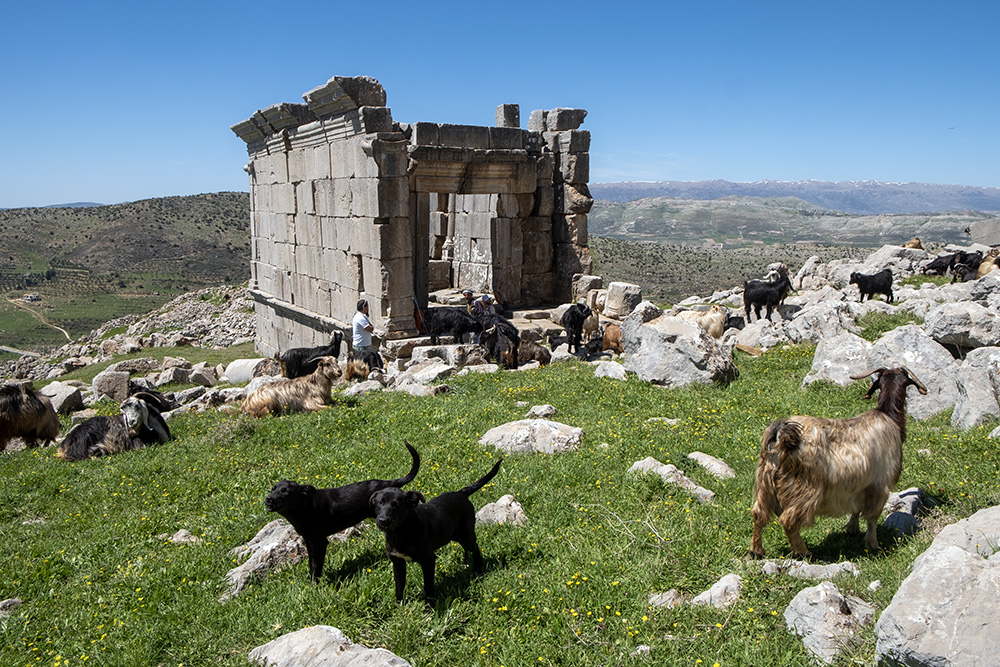
The Roman fort at Ain Hercheh which overlooks the western Beqaa valley and the Shouf Mountain range.
After celebrating my 65th birthday in Rashaya with a $4 bottle of Romanian spumante (sparkling wine) and an extra fluffy chocolate cake, we continued our journey south. We spent the next two days walking along the Lebanon Mountain Trail’s last two sections from the towns of Rashaya to Hasbaya, where we crossed from the Beqaa Valley to South Lebanon, and then from Hasbaya to Marjayoun.
As we headed toward Hasbaya, we continued to walk in the shadow of the mighty Jabal el Sheikh (Mount Hermon). The landscape was blanketed with yellow dandelions and butter cups, but, unfortunately, we weren’t able to access one of the most beautiful stretches of this part of the trail as a sewage treatment plant had been built in the valley where the LMT once passed. Instead, we walked on an asphalted country road to avoid the foul smells rising from the stream bed (wadi) below.

Walking past an ancient winepress in the shadow of Jebal Sheikh ( Mount Hermon). The trail between Rashaya and Hasbaya.
Soon we forgot about this environmental disaster, which by the way was financed by the US Agency for International Development (USAID), as we caught glimpse of an archeological gem tucked away in this valley. The Roman fort at Ain Hercheh is not officially on the LMT but it is definitely worth the extra kms (miles) that made this day an extra-long trek of 24.3 km (15 miles). The fort, still off the tourist map, is in relatively good shape with all four walls still standing. As we sat admiring the setting, we were joined by a shepherd and his goats who went about their business seemingly oblivious to the magnificence of this historical relic.
From there we walked along the base of the Jabal el Sheikh, mostly through farmland. We made it to Hasbaya around 7:30 pm. Our host had prepared a succulent dinner of rice and aubergine topped with fried almonds along with a yoghurt and cucumber salad. We paired the meal with Lebanese red wine and called it a day.
Day 4: Hasbaya to Marjayoun
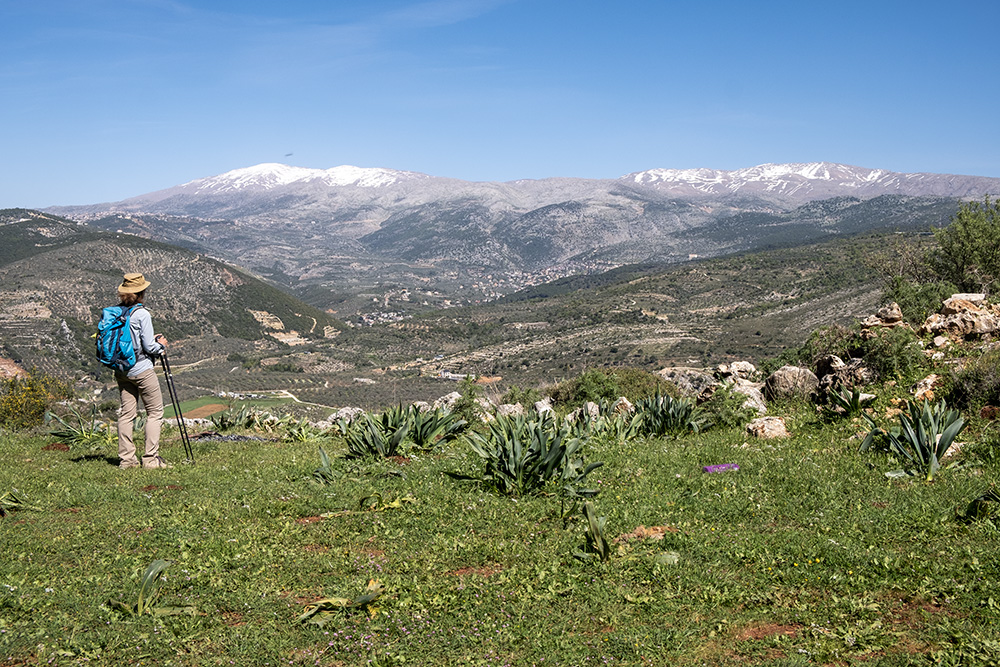
Overlooking Jebel Sheikh from near the village of Ebl es Saqi
On the fourth day, our last, we started with a small detour to the village of Kawkaba to visit a handful of ancient olive trees that are believed to have biblical significance. After this brief diversion we passed small villages, farmland and crossed over the Hasbani River stopping at an khan (old market) which was part of the ancient trade routes that criss-crossed this region. On this stretch is where we spotted some of the most spectacular of Lebanon’s spring flowers including wild orchids, irises, and of course cyclamens.

Crossing the Hasbani River and finally finishing the trek at Les Vignes du Marje winery.
Many of the Christian villages that we crossed during this hike have been visibly affected by emigration. The trend, which started at the turn of the 19th century, regained steam with the Lebanese War and recent economic crisis. The effect of this exodus was most visible in the town of Ebl es Saqi overlooking the plain of Marjayoun on one side and Jabal el Sheikh on the other. The town’s older section is home to splendid, abandoned stone houses which speak of a more thriving past. As we were running late for a tour of Les Vignes du Marje winery, we skipped the section between Ebl es Saqi and Marjayoun for more urgent business. We spent the rest of the afternoon with our gracious hosts Carol and Imad Khoury tasting their excellent wine.
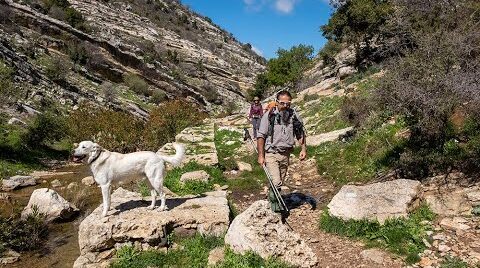

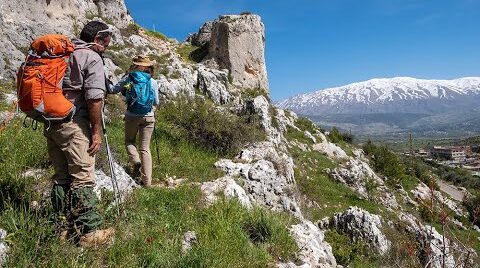
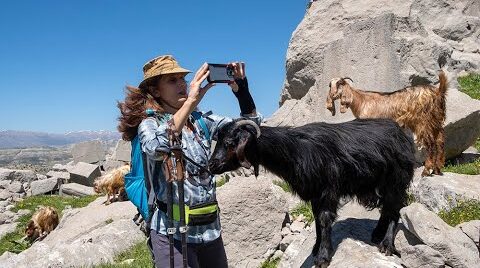
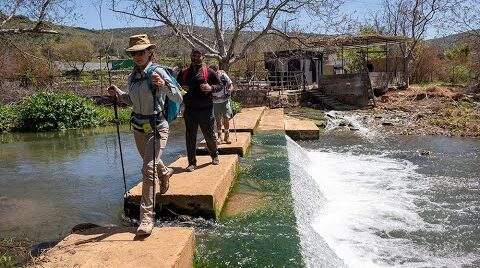
Great job…